Continued from Part 1
A Walk on Hemakuta Hilltop
We began exploration of Hampi at the Sasivekalu Ganesha Temple, located on the Hemakuta Hill.
As the story goes, one day, Lord Ganesha, being very fond of food, ate so much that he got concerned that his tummy might burst. So he caught a snake and tied it around his tummy as a belt to prevent its bursting.
The murti of Sasivekalu Ganesha is a monolithic work, 8 feet high carved in the typical style of Vijayanagara times. The name of Sasivekalu (meaning mustard seed) is supposed to have been given due to the shape of the stomach of the Ganesha as depicted in this murti. Intricate carvings and details make this Ganesha very special.
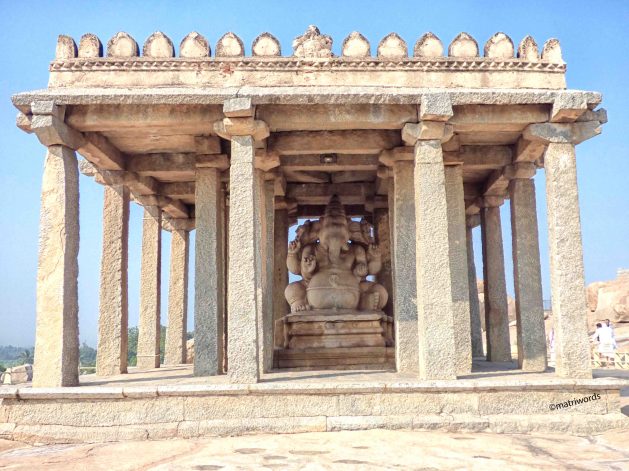
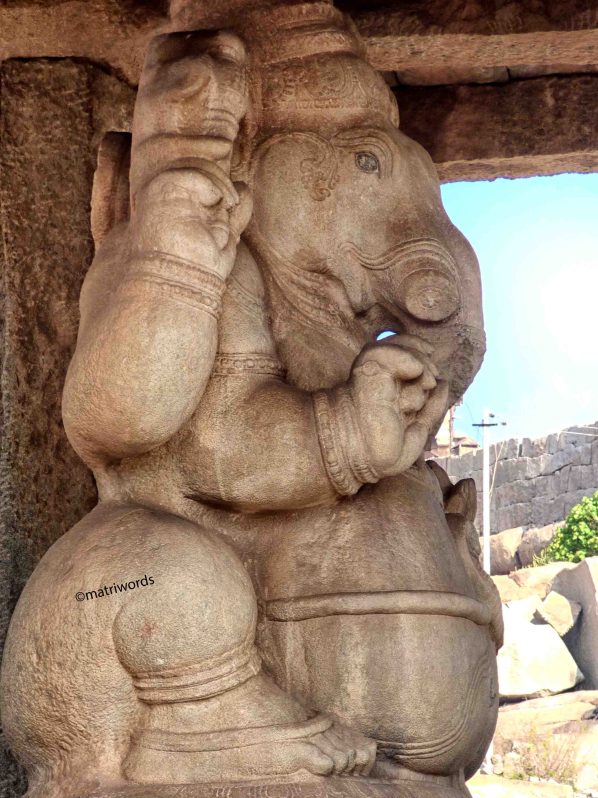
Nearby, on the same hill, we meet Kadalekalu Ganesha.
The 4.6 metres (15 feet) high monolithic sculpture of Kadalekalu Ganesha is one of the largest sculptures found in Hampi. The belly of Ganesha has been chiseled in such a manner that it resembles a Bengal gram (known as Kadalekalu in Kannada). Hence, the name Kadalekalu Ganesha.
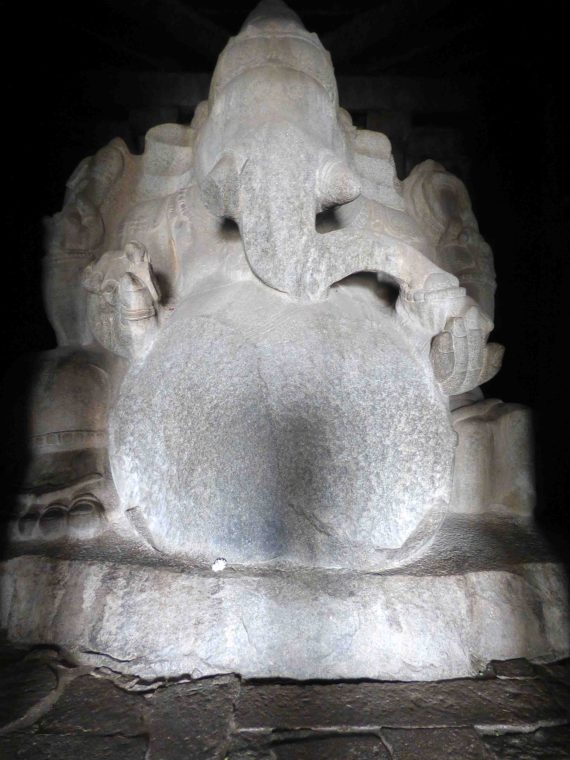
“The Indian ideal figure of the masculine body insists on two features among many, a characteristic width at the shoulders and slenderness in the middle. Well, an objection to broadness of girth and largeness of belly—allowed only where they are appropriate as in sculptures of Ganesha or the Yakshas—is not peculiar to the Indian aesthetic sense; an emphasis, even a pronounced emphasis on their opposites is surely intelligible enough as an aesthetic tradition, however some may prefer a more realistic and prosperous presentation of the human figure. (Sri Aurobindo, CWSA Vol 20, p. 256)
A walk on the Hemakuta hilltop – which is almost a flat rocky expanse after an initial climb – brings you in the presence of a large number of temples, archways and pavilions. One can see the ruins of the tall stonewalls which were used to fortify the hill.
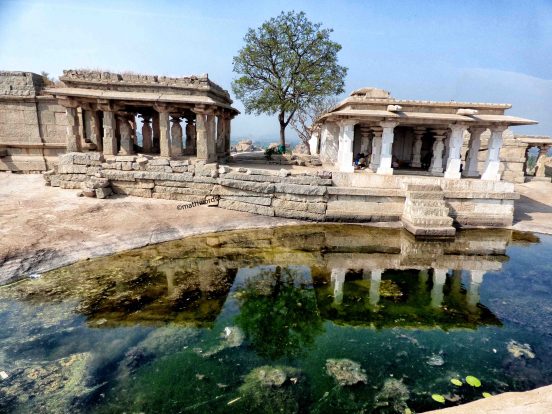
It is believed that it was on the Hemakuta hill that Lord Shiva did his tapasya before marrying Pampa. When Shiva consented to marry Pampa, golden rain covered the hill. (Hema in Sanskrit means gold, thus connecting the name of this hill with this story).
This is also believed to be the place where Lord Shiva opened his third eye to burn Kama, the god of lust and desire. In his attempt to help Pampa get the attention of Shiva who was deep in his meditation, Kama tried to distract Shiva. This led to the wrath of Siva who opened his third eye and eventually killed Kama. Rati, the goddess of passion and Kama’s wife, pleaded to Shiva to give Kama back his life. Moved by her entreating, Shiva brought Kama back to life, but with a condition that from that day onwards only Rati would be able to perceive Kama’s physical form, and for the entire creation he would live only as a disembodied spirit. This is why it is said that Kama does his work on humans and gods alike, completely unobserved.
A number of temples, including several pre-Vijayanagara temples, on the Hemakuta Hill are dedicated to Lord Shiva.
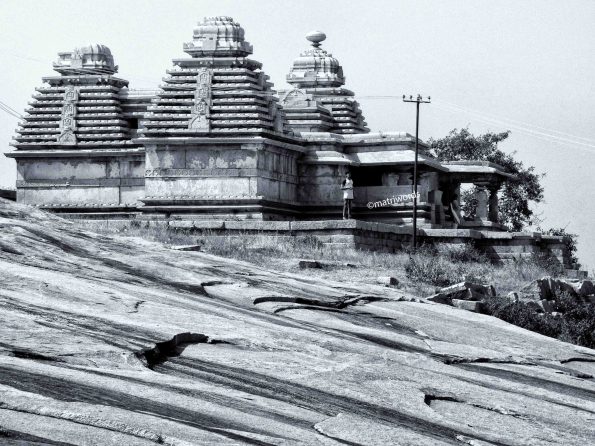
Virupaksha Temple is the major temple on Hemkuta Hill, which can be accessed either through the tower located close to the temple’s main entrance at the very end of the Hampi Bazaar which terminates in front of the Virupaksha temple, or through the twin storied archway located near the Sasivekalu Ganesha and Kadalekalu Ganesha.
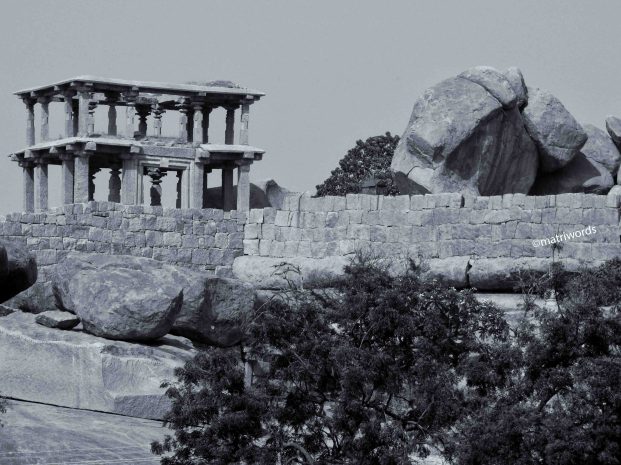
Standing near this archway one gets a good aerial view of the Krishna Temple complex, as well as the Lakshmi Narasimha and Badavilinga shrines located beyond the Krishna temple.
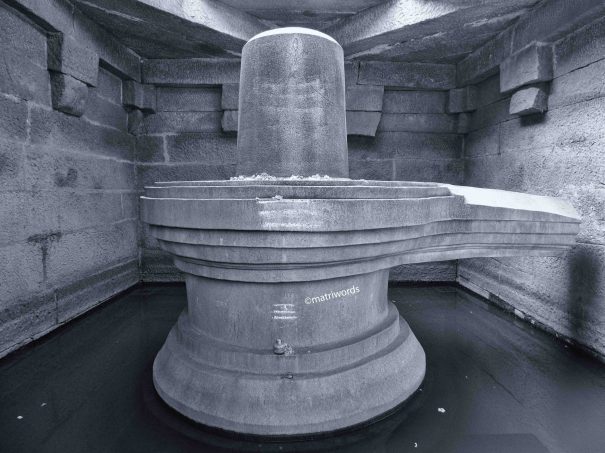
Badavilinga
The name Badavilinga is a combination of two words – Badva and Linga, Badva means poor and Linga represents Shiva. It is believed that the Shivalinga placed inside the temple was commissioned by a poverty-stricken peasant woman.
The 3-meter-high Linga carved out of black stone sits on a large circular yoni pitha inside a small stone chamber which has a single opening in front. The chamber has no ceiling, so during the daytime the Shiva Linga is flooded with sunlight. Another interesting aspect is the water-bed on the floor of this temple.
Despite the destruction of some outer parts of this temple at the hands of Islamic invaders, the Shiva Linga stands intact even today. And so do the inner walls of the chamber, without any severe damage.
When we visited, some renovation work was happening to create an easier access path to the Badavilinga temple.
To be continued….
Coming up in Part 3 – Virupaksha temple

Thanks for a great compilation one of my favorite sites along with Halebidu and Beluru
Thanks again
LikeLiked by 1 person
Thank you Keshav. Glad you enjoyed the photo-tour of Hampi. I have posted 5 parts now. More are coming.
LikeLike
Great tour, Suhas! I had heard of Badavalinga and had thought it was because some poor man had built the temple, but only now came to know it is actually Badavilinga, since it was a woman! (Badavi being a poor woman). Thanks for the detailed info. Also loved the descriptions of sasivekalu and kadalekalu Ganeshas. A great photo blog!
LikeLike